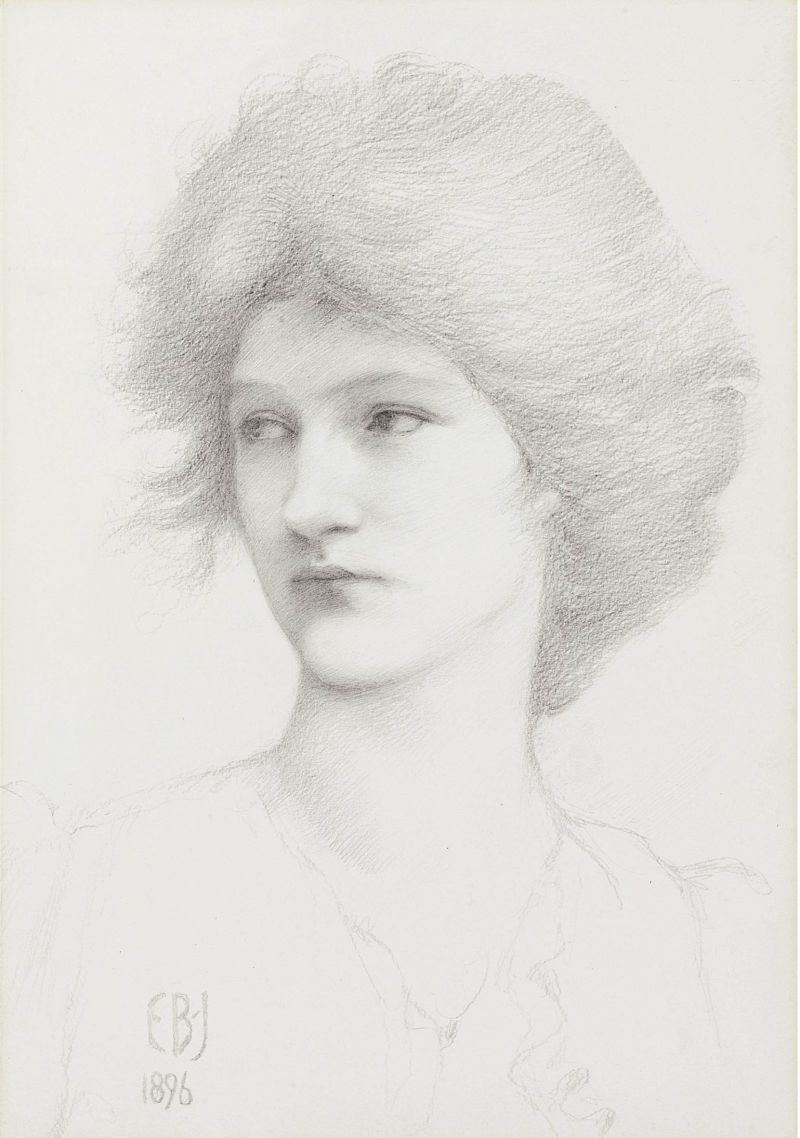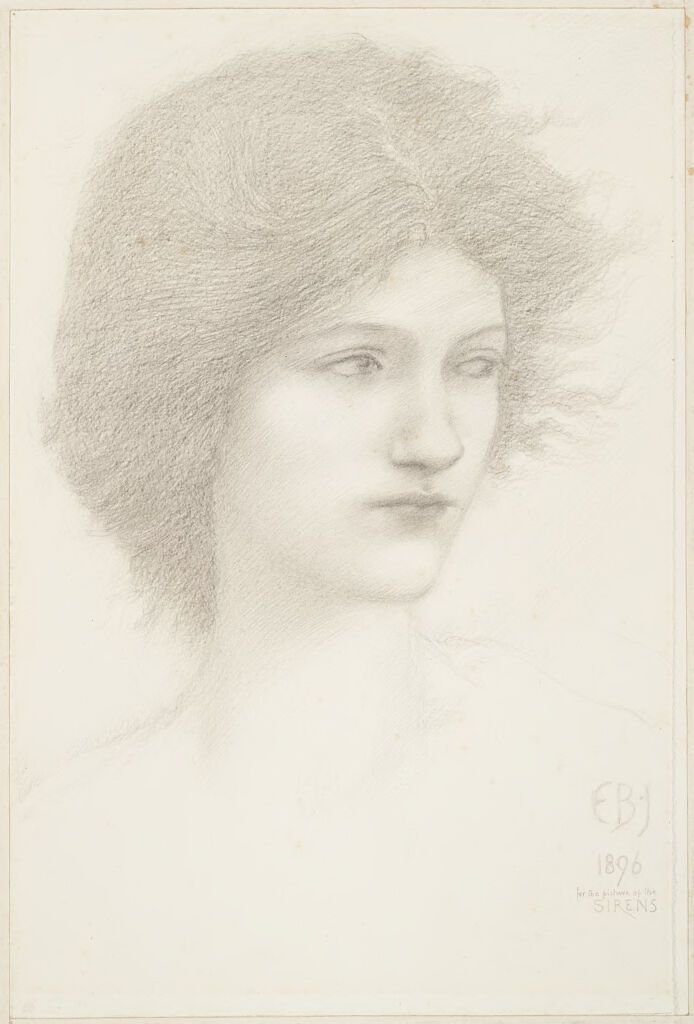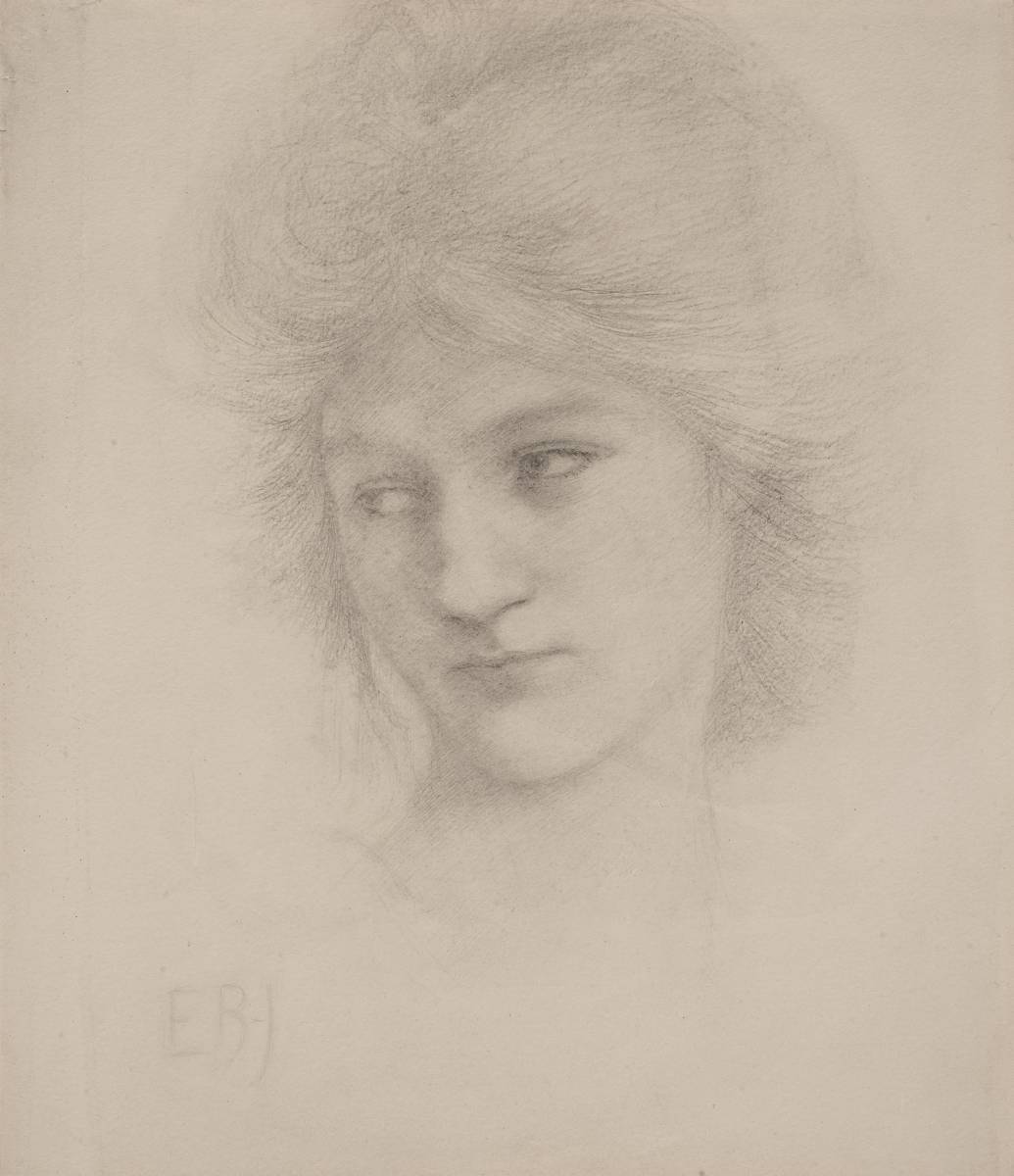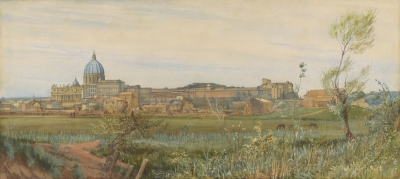This sensitive, large-scale portrait drawing is one of a group of ambitious works depicting Olive Maxse made by Burne-Jones in the 1890s. In later life he established close, tender, intimate but platonic relationships with various young women who were inspiration for his art and philosophy on life. His muses included Helen Mary Gaskell and her daughter Amy, Mary Gladstone, Frances Stanhope and Cicely and Frances Horner. Most of the women with whom Burne-Jones conducted his passionately-worded correspondence were of a similar type – slender, beautiful, aristocratic and wealthy but with some sadness or instability in their lives that gave them the fragility that he found irresistible. These women’s’ faces gaze out from his last masterpieces and one of the most prominent of these was Olive Maxse.
Olive Hermione Maxse was the elder daughter of Burne-Jones’ friend Cecilia Steele, daughter of a retired Indian Army colonel. In 1862 Cecilia married Admiral Frederick Augustus Maxse, a naval officer and radical, after he followed the nineteen-year-old home from the Crystal Palace and asked her parents for her hand in marriage. The union was not a happy one and after the separation of her parents in 1877 Olive and her siblings grew up under the tutelage of a succession of governesses. Like their mother, both Olive and her sister Violet became close to Burne-Jones. Their correspondence demonstrates that Burne-Jones offered much advice and encouragement to Olive. A highly proficient musician, Olive went to Paris to study the piano in 1893, whilst Violet studied painting at the Académie Julian. Burne-Jones was delighted when Olive reported that students at the Académie had suggested that her features resembled those of a Burne-Jones model. He wrote in response: 'those students at Julian's conceived a high ideal of me if they think they are at all like any heads I paint - I hope it's a little true - for I think you beautiful - and an old artist may tell a young girl that without hurt or blame - and when you come back I shall claim my privilege of drawing from you.’[1]
Olive returned to London in 1894 and became one of Burne-Jones’s most important models. This spectacular, large-scale drawing can be related to a series Burne-Jones made of Olive in the 1890s which relate to some of his most important late works. Burne-Jones’s drawings demonstrate his sensitivity and mastery and although they have a distinctive style, they are always individual and perceptive. Burne-Jones favoured graphite on thick wove paper for his studies of Olive, using the subtle gradations of tone achievable on the textured surface with an infinitely fine network of hatching to capture her distinctive features and lightly blended graphite to suggest her hair and modelling shadow. As Martin Harrison and Bill Waters noted in 1973, Burne-Jones’s: ‘late drawings show the benefit of a lifetime’s experience in the handling of the media. Textures produced by charcoal, crayon, pencil and pastel are all recognised and used for their intrinsic characteristics. His technique varies with each one, but they all show an acute sensitivity to the positioning of a line or mass within the framework of paper.’
Olive modelled for a series of important late works by Burne-Jones. A drawing of Olive dated 1895 now in the Birmingham Museum and Art Gallery is inscribed by the artist as being for The Sirens, a painting now at the Ringling Museum of Art, Sarasota, Florida, which had been begun in the 1870s but was left incomplete at the time of Burne-Jones’s death almost three decades later.[2] Burne-Jones produced a further two drawings of Olive in subtly differing attitudes for figures in the painting, these include a drawing close in atmosphere and approach to the present drawing inscribed ‘The Sirens’ which appeared at Christie’s in 2019 and a related study now in the collection of the Harvard Art Museums.[3]
Burne-Jones produced a further two drawings of Olive in subtly differing attitudes for figures in the painting, these include a drawing close in atmosphere and approach to the present drawing inscribed ‘The Sirens’ which appeared at Christie’s in 2019 and a related study now in the collection of the Harvard Art Museums.
_Ponce_800_336_80_faf9f5.jpg)
Edward Burne-Jones
The Last Sleep of Arthur in Avalon
Oil on canvas
110 x 256 inches; 2794 x 6502 mm
Museo de Arte de Ponce, Ponce, Puerto Rico

Edward Burne-Jones
Olive Maxse, a study for the attendant holding Arthur's Shield for ‘The Last Sleep of Arthur in Avalon’
Pencil
Signed and dated: EB-J 1896
20 x14 inches; 506 x 356 mm
Private collection

Edward Burne-Jones
A Siren
Pencil
19 3/8 x 13 inches; 492 x 330 mm
Harvard Art Museums/Fogg Museum
Bequest of Grenville L. Winthrop
References
- Martin Harris and Bill Waters, Burne-Jones, London, 1979, p.161.
- Eds. John Christian, Elisa Korb and Tessa Sidey, Hidden Burne-Jones: Works on paper by Edward Burne-Jones from Birmingham Museums and Art Gallery, Birmingham, 2007, cat. no.59, p.61.
- Christie’s, 11th July 2019, lot.9 and Harvard Art Museums, accession number 1943.678.


